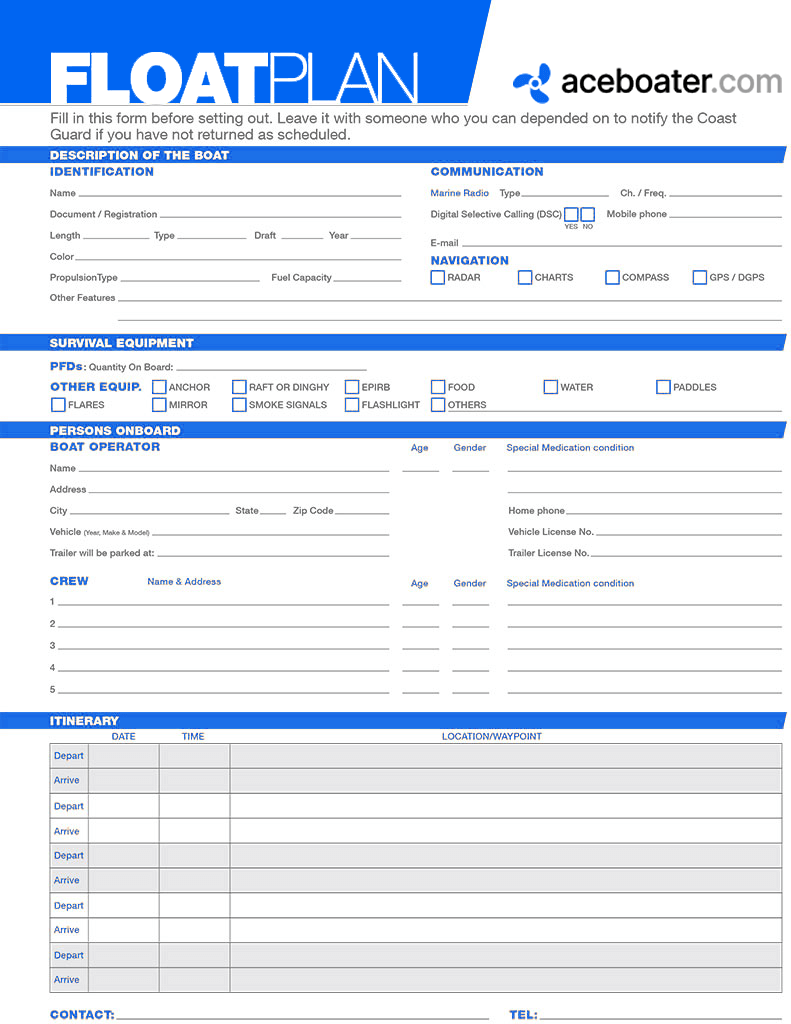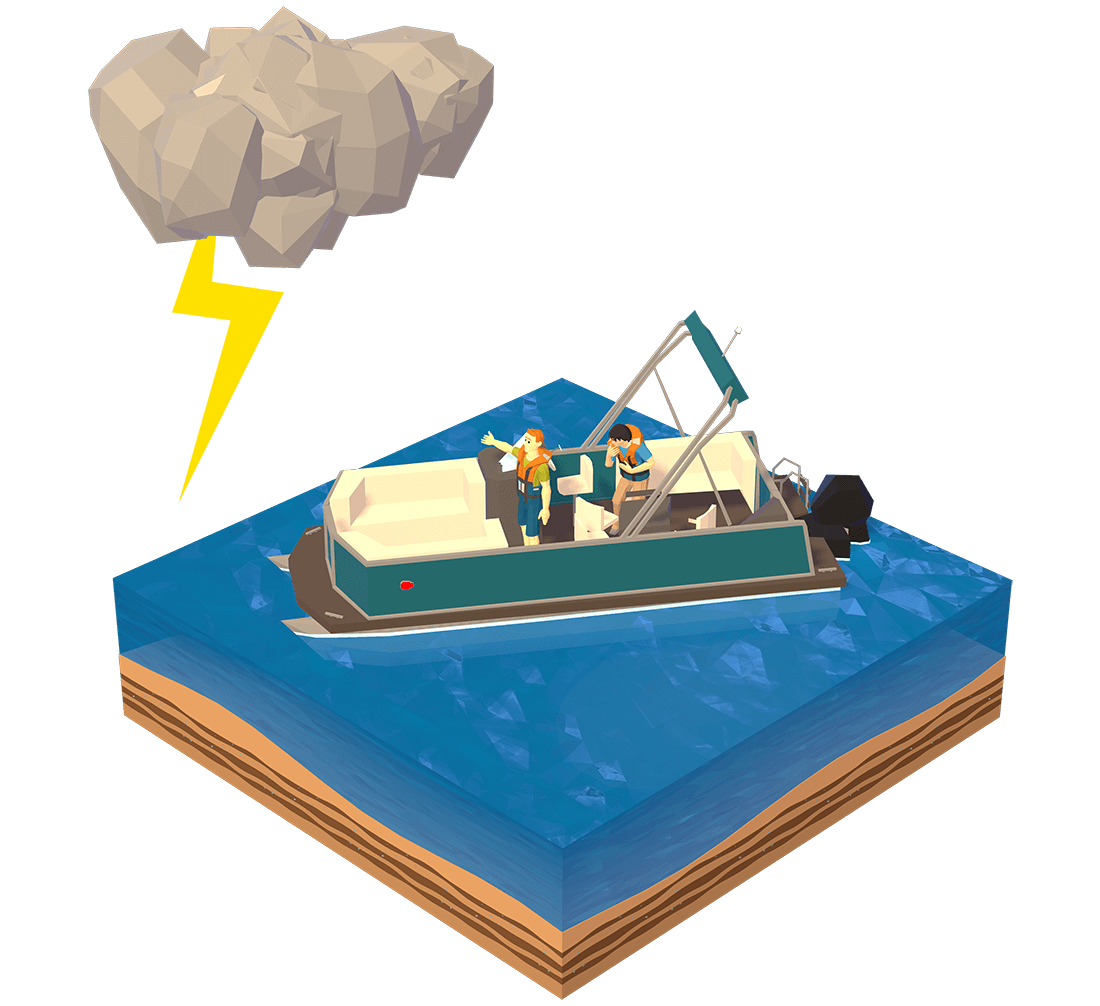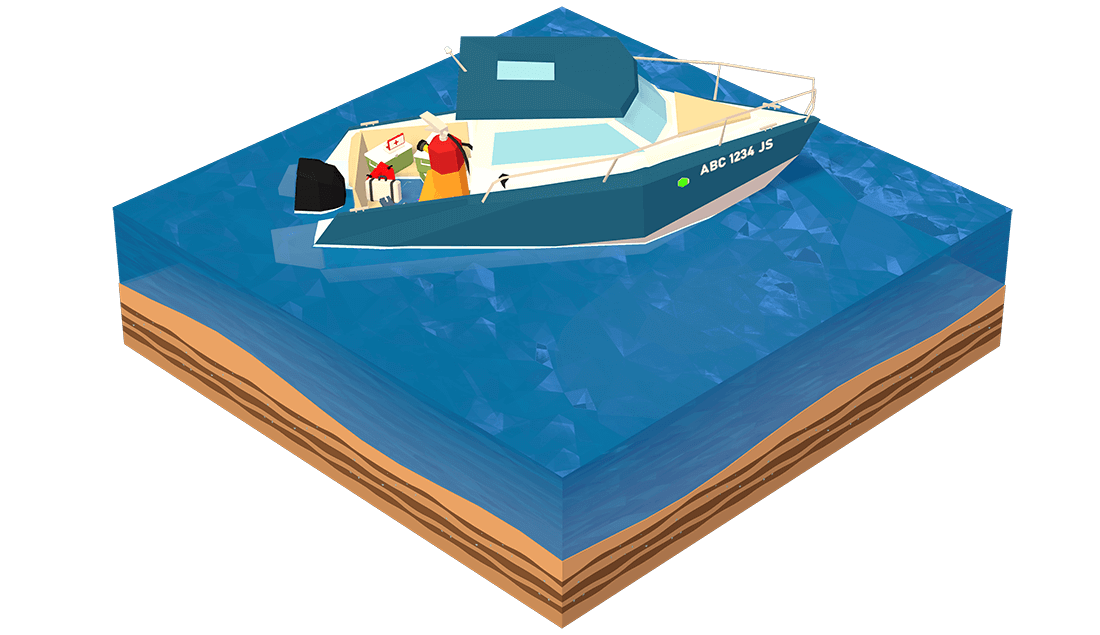Best planning and preparation practices
Here's what you should do before heading out
Make sure that the vessel is in good working condition, and serviced. Also make sure that you have the adequate oil and fuel supply for the planned voyage. A handy tip for never running out of gas is: 1/3 for trip out, 1/3 for trip back, 1/3 in reserve.
You should complete a float plan with the necessary details in order to assist in initiating a call for search and rescue in the case of an emergency. File the plan with a responsible person who is familiar with what instructions to follow in case of an emergency. As well, during the trip, update the plan in order to prevent unnecessary emergency operations. If you change your intinerary and decide to come back to port earlier than planned, inform the person who has your trip plan so that this person will not inadvertently start a search and rescue operation. It is, therefore, very important to close a trip plan when you are done.

If you plan on leaving Canada to enter U.S. waters, you are strongly advised to check the requirements of U.S. Homeland Security. Rules and regulations can change on short notice for pleasure craft, and it is advisable to gather all the necessary information before leaving Canada.
Check the nautical charts of the boating area if they exist. They allow you to know where overhead obstacles, bridges and underwater cables in the boating area are located. Looking at tide tables and current atlases will also help you know about water levels, times of low, slack and high tides, and the direction of water flow.

Weather and water conditions play a big role in your safety on the water. Before heading out, make sure you get the latest forecast for your area and that you understand what it means. Environment Canada provides marine forecasts in many ways.

Finally, it is important to determine the acceptable load depending on the boat’s maximum load capacity, shown on the capacity plate/label. Always ensure that the waterline of the boat, which represents the maximum load capacity that can be put in the boat, stays above the water.
